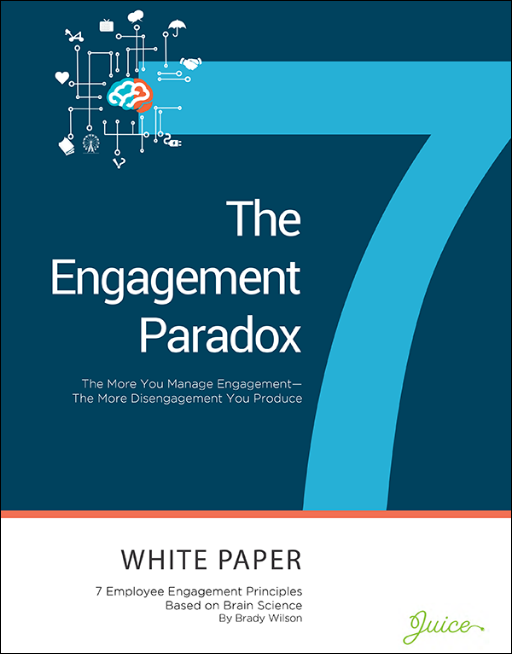
Collaborative Leadership: Practice Partnering, Not Parenting
Power Collaborative Leadership With a Partnering Mindset
Think back to a time when you felt happily connected and in the flow of your work. You were fully immersed; time worked in your favour–you accomplished more in significantly less time. Closing your computer for the day, you felt a sense of meaning and contribution, like you had added real value to your organization. The wash of satisfaction continued as you headed home. You were newly energized, fully present and engaged for a night of activities with your family.
You’ve likely had days like this, though perhaps not consistently, and certainly not the norm. But imagine if this became your day-to-day reality. And imagine if you could create this reality for your team at work.
Here’s the good news: You can. Over the past 20 years, we’ve developed a simple and practical framework we call Partnering. This collaborative leadership style helps unlock more in yourself and your employees through powerful conversations, which leads to better performance, and greater energy and fulfillment for your team. The kind of day we describe above is the natural by-product of relationships marked by a partnering mindset.
How do collaborative leaders fuel employee engagement?
Are you parenting or partnering at work? Brady Wilson discusses this duality how partnering, a collaborative leadership style will unlock the full potential of your teams.
How Do Leaders Undermine Collaboration?
If you become over-responsible in the area of finances, What might your partner become? Under responsible? If you become under-responsible dealing with and disciplining the kids, what might your partner become? Over-responsible?
How does an enlightened, well-intentioned manager, turn into a parent in the workplace? Do you wake up in the morning – you’re eating your cornflakes thinking, “how do I make my employees feel like children?”. Of course not. The answer is in the brain, which interprets shared responsibility as a form of threat, and naturally avoids it.
Think about transactional analysis. As a manager, there are three ways you can show up in a relationship, as a parent, as an adult or as a child. Your employees can show up in three ways, as a parent, as an adult or as a child. What do you want and need? Of course, adult to adult. That’s the partnering we need in the workplace.
However, if your employee slips down into victimitis mode, “I’ve lost my agency. I have no self efficacy. I have nothing that I control here.” If they start complaining and gossiping, while not initiating, they slide into under-responsibility. That will create a powerful impulse for you to slip up into over-responsibility. You’ll start over reminding people, taking back things you’ve already delegated, because after all, only you can do it right. You’ll start helicoptering, hovering, and micromanaging. Do you want to be doing that? Of course not. You’ve fallen prey to the “responsibility virus”.
“Responsibility Virus”
Roger Martin speaks about this in his powerful book Responsibility Virus. He says, “there’s a fixed amount of responsibility that can be assumed in any relationship”. If one person becomes over responsible, the other by nature, will slip into under-responsibility.
Collaborative Leadership Can Feel Like a Risk
When leaders share responsibility with employees, they may experience feelings of a loss of control or lack of certainty. Will this actually get done on time? Will it get done the way I want it to be done? They may experience feelings of fear of failure. Sharing responsibility with someone else means relinquishing some ownership and control. That can feel like a risk to managers.
So, the brain has a simple solution. Go binary. Managers either take all the responsibility, letting employees off the hook, but giving the manager the sense of ultimate control over results. Or they throw all responsibility over the fence to the employees, relinquishing control himself, but getting off the hook in the risk department.
Why does all of this matter? Managers who slip into parenting, unwittingly introduce into the organizational culture, guilt, shame, compulsion, control, manipulation, micromanaging, intimidation, threat, and bullying.
Do they intend to? Of course, not. It’s the power of the “Responsibility Virus.” Managers who have become self-aware of their natural parenting instincts, and have shifted to partnering, unleash energy that cultivates decision making capability among employees, grows people’s talents, and calls people to higher levels of accountability and away from entitlement.
How a ‘Partnering Ladder’ Will Foster Collaboration
What can you do? You can build a partnering ladder with your employees. When your employee has slipped into under-responsibility, you can beat the all or nothing binary impulsive “Responsibility Virus” by creating a ladder of incremental ownership for your employees accompanied by a ladder of incremental delegation from you.
Every upward rung your employee climbs in the areas of skill, knowledge, experience, responsibility, and commitment is met by a further chunk of delegation and ownership, a downward rung of responsibility for you. This allows you to do your real job, running the business.
What is Partnering?
“Partnering” is a framework that offers a simple and practical approach to quickly align on what matters most, build the openness needed to explore possibilities, and create the conditions to co-create shared value. Through partnering, leaders can unlock the full potential of their teams and create a more collaborative and innovative workplace.
Read more: Partnering: A Framework For Transformational Leadership

The Engagement Paradox
This white paper offers a new path forward – one that blends the energy employees want with the customer experience and business results leaders need.
THE BOTTOM LINE
Without energy, your strategies are at risk
Transforming the way you engage with employees in today’s complex workplaces requires new approaches to leadership. Our customized learning solutions will help you grow leadership skills and fuel sustainable performance.
If you want more on this, check out our white paper, The Engagement Paradox which goes into how we can transform engagement and get the very best from our team.
Your content is only one click away.
Thanks for your interest in our content. We hope you find value in the time you invest with it. Click the button below and get immediate access to this truly valuable content.
Complete the form below and get instant access to this game-changing content.
Rest assured, we take your privacy seriously and will never sell, trade, or share your information with a third party.



